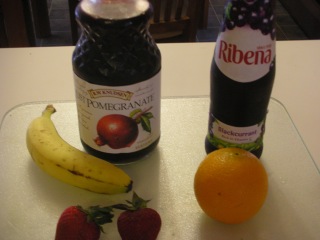
Today, I want to publicly say "thank you" to Inza Bamba for his recent Thanksgiving gift--a treasure "more precious than gold." He made it clear that the package of tightly packed granules, direct from Côte d'Ivoire, was for me. He knew how special it would be to taste "fresh" attiéké as opposed to "dried," boxed attiéké (like that I picked up in Washington DC last month). Attiéké is a bit like gari, but it is steamed cassava granules, and is more like couscous than gari.
I know that he often prepares attiéké with "sauce aubergine," (eggplant stew) and is partial to lamb, so I decided to prepare the two together a few days ago, Ghana-style.
Recipe #96: Sauce Aubergine with Lamb and Attiéké (Ghana-style)
- I took a medium purple eggplant (sorry, no garden eggs around here), peeled and chopped it, added water to cover and put it on the stove to boil for a few minutes, while I
- Added a couple pounds of lamb chunks (you can later cut the meat off the shanks if you like), bone in, and added some seasoning (a couple of chopped onions, a few minced garlic cubes, part of a seeded habanero pepper, some sea salt, and a good tablespoon of freshly grated ginger, plus a little dried ground red pepper for good measure) to it and stirred, well and let it steam in a covered soup pot with a little water.
- Next, I blended (in an electric blender) a couple of fresh tomatoes and several leftover canned ones I had in the refrigerator (Perhaps I strained out the seeds as I added the blended tomatoes, but that's just picky me), then I
- removed the softened eggplant with a slotted spoon and added it to the blender, along with a little water (maybe half a cup) to help blend it up. There's no need to blend the eggplant if you like it chunky, but I got into the habit of always blending it since my children preferred the sauce creamy.
- I added the eggplant to the soup pan with the tomatoes, lamb, etc., along with some more water (a couple of cups), and let the mixture simmer until the meat was soft (Actually, I left it simmer on the stove for around 45 minutes, then cooled it and put it in the refrigerator to finish and serve the next day).
- The day we ate it, I reheated it and let it simmer for about half an hour, adjusted the seasonings (needed more salt, and I added a heaping tablespoon of tomato paste).
- While it was finishing, in a separate bowl I prepared some fresh okra (cut off both ends, and sliced it into rounds), cooked it in the microwave with a little water for about 10 minutes (Be careful to use a large bowl because the okra will bubble up as it cooks). I would have cooked the okra right in the stew, but we were having a guest for dinner, and I was not sure if he liked okra.
- While the soup was simmering, I measured out a cup of the dry attiéké and set it aside. I also measured out a cup of the "fresh" attiéké . I poured an equal amount of water into a small sauce pan (a good cup) for the dried attiéké . I made a "couscousiere" in a small saucepan by putting a strainer in it and lining it with a cheesecloth.
- Shortly before we were ready to eat, I added a cup of water to the fresh attiéké (big mistake), then tried to drain out the obviously excess water, and put the mixture into the couscousiere to steam for 15 or 20 minutes (I think it needed no extra water, and it should have simply been steamed). It became a glutinous mass (kind of like a gooey eba), and next time I'll totally skip adding any water. The flavor was good, however. Sorry to have messed up, Inza. I'll prepare some more tomorrow night for our "African cafe" potluck with my students, and report back.
- Shortly before I eating, I boiled the cup of water and poured the dry
attiéké into it (the same way one normally prepares dried couscous in the U.S., letting it sit, covered, for a few minutes until all the water was absorbed, then fluffed it up with a fork. Very quick, very easy, very tasty (and no gluten, too). - The meal was well received, and needed no extra accompaniment, though I did serve a fruit dessert.


















































